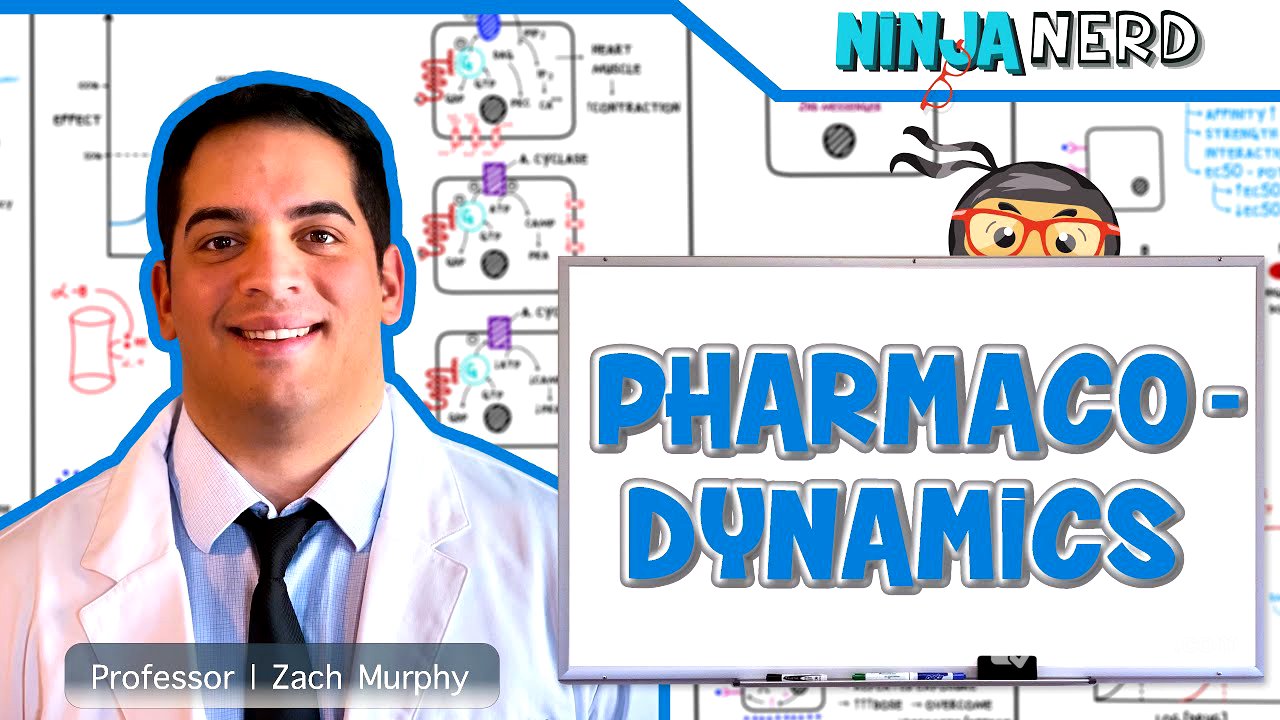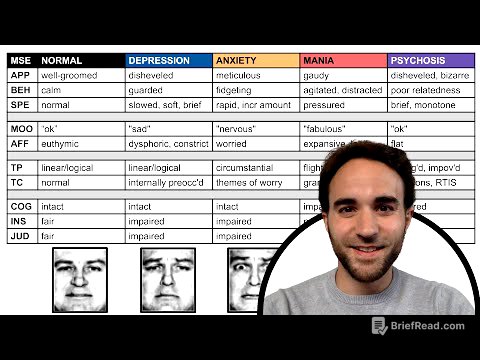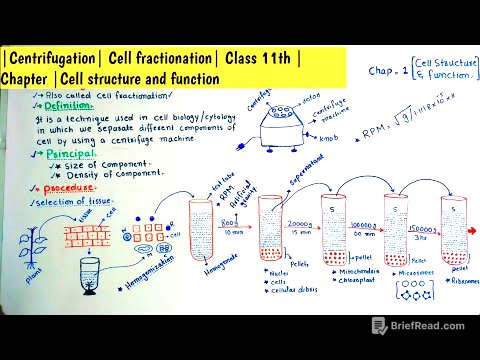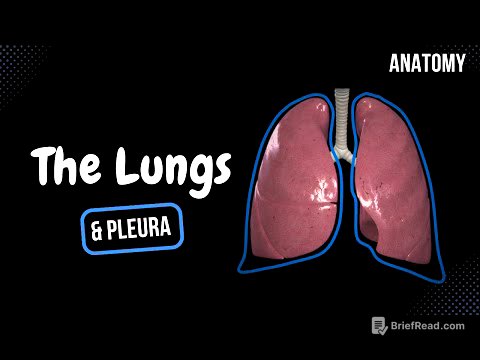TLDR;
This video by Ninja Nerd provides a comprehensive explanation of pharmacodynamics, detailing how drugs interact with the body at a cellular level to produce therapeutic effects. It covers essential concepts such as drug-receptor interactions, different types of receptors, dose-response relationships, therapeutic index, and the distinctions between agonists and antagonists.
- Pharmacodynamics explains what the drug does to the body.
- Drugs interact with receptors to produce cellular responses.
- Understanding dose-response relationships is crucial for determining drug potency and efficacy.
- Therapeutic index helps assess the safety of a drug.
Pharmacodynamics Introduction [0:07]
Pharmacodynamics examines what drugs do to the body, focusing on cellular interactions. It builds upon pharmacokinetics, which describes how the body affects the drug through absorption, distribution, metabolism, and excretion (ADME). Once a drug reaches the tissues, it interacts with cells, either stimulating or inhibiting them, to produce a cellular response. This interaction involves binding to receptors, which can be extracellular or intracellular, triggering cascades of events that lead to the desired effect.
Types of Drug-Receptor Interactions [0:38]
Drugs can bind to different types of extracellular receptors, including ligand-gated ion channels, G-protein-coupled receptors, and tyrosine kinase receptors. Ligand-gated ion channels open or close in response to drug binding, allowing ions to flow in or out of the cell, thereby altering cellular activity. An example is lorazepam, which acts on GABA-A receptors, opening chloride channels and hyperpolarizing neurons to reduce seizure activity. G-protein-coupled receptors, upon drug binding, activate G proteins that trigger second messenger systems, such as the activation of adenylate cyclase or phospholipase C, leading to various cellular responses. Tyrosine kinase receptors, like those activated by insulin, initiate phosphorylation cascades that ultimately affect cellular function. Intracellular receptors, on the other hand, bind to hydrophobic drugs that can cross the cell membrane, affecting transcription and protein synthesis.
Dose-Response Relationship [29:03]
The dose-response relationship illustrates the correlation between drug concentration and its effect. Potency, which is the strength of the drug-receptor interaction, is inversely related to the EC50 (the concentration required to achieve 50% of the maximum effect). A lower EC50 indicates higher potency. Efficacy, on the other hand, depends on the drug's ability to occupy receptors and its intrinsic activity. Full agonists produce a 100% clinical response, while partial agonists produce a sub-maximal effect even when all receptors are occupied. The dose-response curve shifts to the right with decreased potency and downward with decreased efficacy.
Therapeutic Index [42:08]
The therapeutic index (TI) is a measure of drug safety, calculated as the ratio of the toxic dose for 50% of the population (TD50) to the effective dose for 50% of the population (ED50). A small therapeutic index indicates a narrow margin between effective and toxic doses, posing a higher risk of side effects and requiring careful monitoring. Examples of drugs with small TIs include warfarin, digoxin, and lithium. Conversely, a large therapeutic index indicates a wide margin of safety, with lower risk of toxicity, as seen with penicillin and corticosteroids.
Intrinsic Activity (Agonists vs. Antagonists) [48:57]
Intrinsic activity differentiates agonists, partial agonists, and antagonists. Full agonists, like norepinephrine, produce a maximal response by mimicking the endogenous system. Partial agonists, such as buprenorphine, produce a sub-maximal response and can competitively inhibit full agonists. Inverse agonists reduce receptor activity below basal levels by stabilizing the inactive receptor form. Antagonists, including competitive and non-competitive types, oppose the action of agonists. Competitive antagonists bind to the active site, reducing drug potency but not efficacy, while non-competitive antagonists bind to an allosteric site, altering the receptor shape and reducing drug efficacy.
Pharmacodynamics Practice Problems [1:10:08]
The video includes practice problems to reinforce understanding of pharmacodynamic principles. These problems cover topics such as receptor types, drug potency and efficacy, and the interpretation of dose-response curves. Examples include identifying the mechanism of action of drugs like lorazepam, comparing the potency and efficacy of different drugs, and determining the therapeutic index of a medication.








